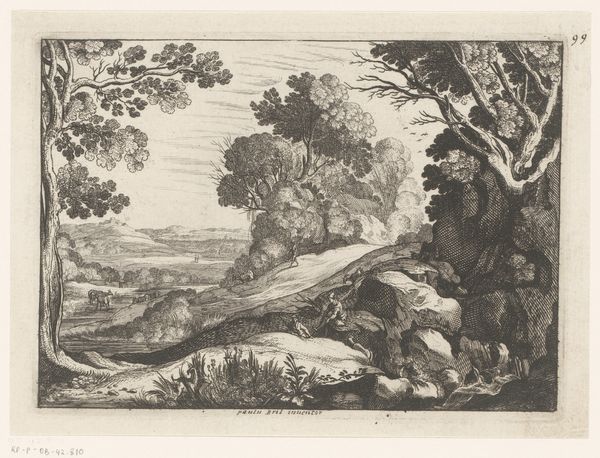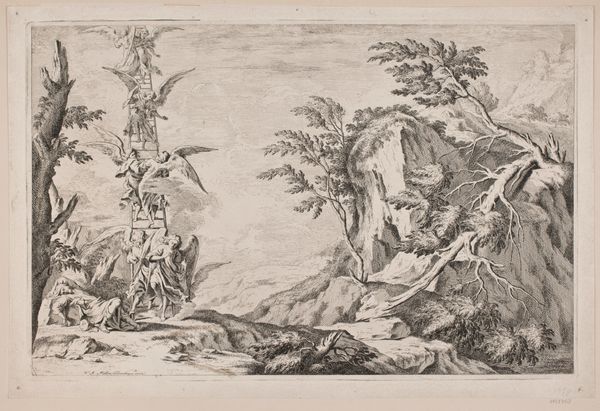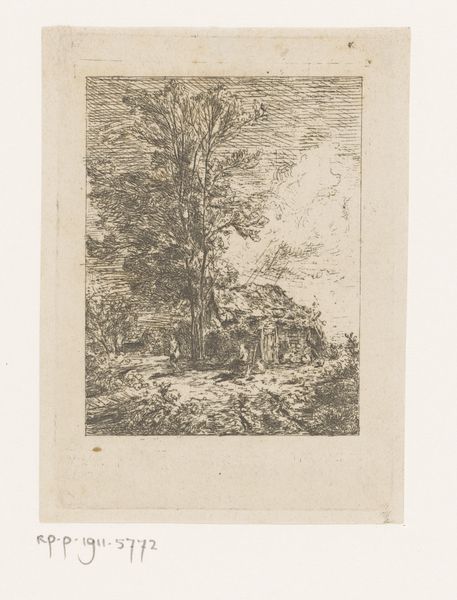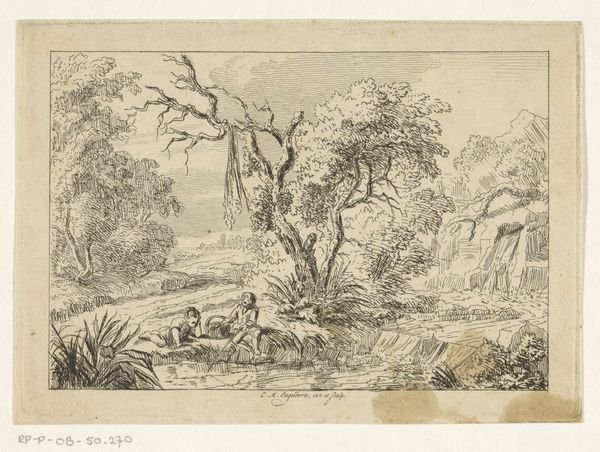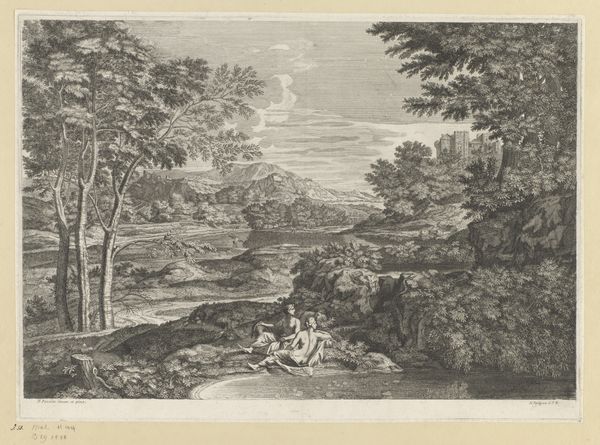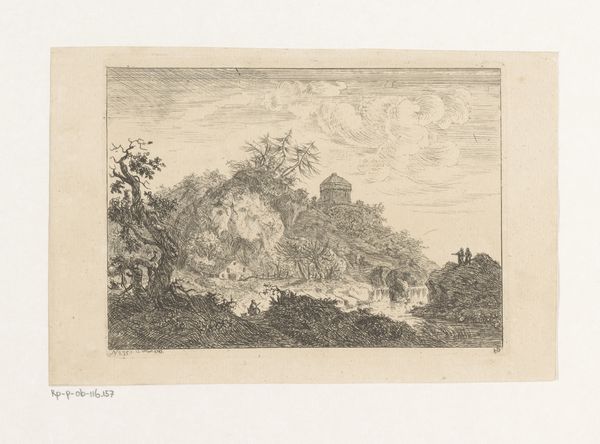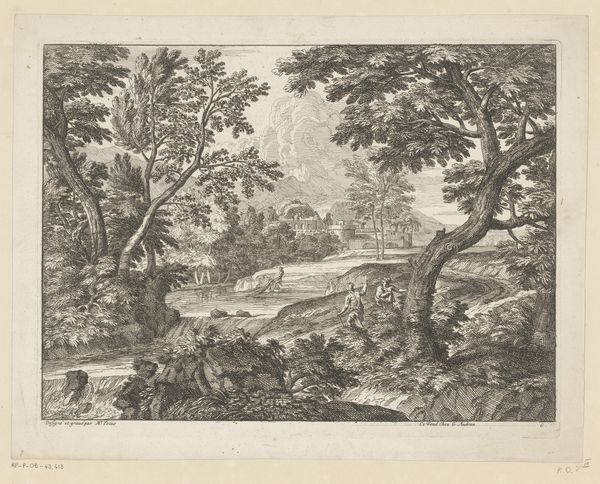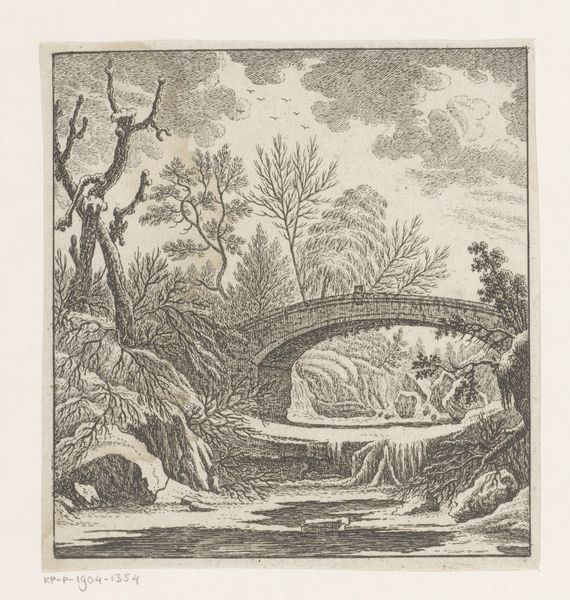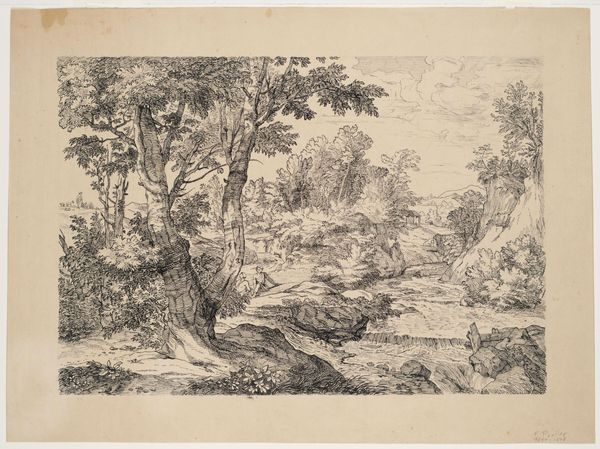
print, etching, engraving
#
baroque
# print
#
etching
#
landscape
#
etching
#
engraving
#
realism
Dimensions: 142 mm (height) x 172 mm (width) (plademaal)
Curator: Immediately striking. A baroque landscape almost theatrical in its arrangement, though limited to monochromatic line work. Editor: Indeed, quite dramatic. This etching, dating from the 18th century, is titled "Bjergegn med flod," which translates from Danish to something like "Mountainous Terrain with River," and it is credited to P. Hovenbek. It's currently housed in the SMK, the Statens Museum for Kunst. Curator: I'm drawn to the juxtaposition of the craggy, almost primordial, rock formations on either side. The symbolism inherent in landscape art of that period suggests both the sublimity and potential danger of the natural world. What about the cultural narrative speaks to you here? Editor: For me, it's the small figures almost dwarfed by the immensity of nature. Look how they process along the water's edge; they almost feel like spectators within a grand stage set, an early commentary on our relationship to the environment, or the ambition of controlling it, and where is all taking place. The architecture that we see is clearly European yet the palm trees signal some form of colonization... an odd coupling. Curator: Precisely! These landscapes reflect not just physical spaces but psychological and ideological ones as well. Notice how the light leads the eye to the horizon and how our symbolic position shifts as we examine this from right to left. Do you notice how that shift occurs within us? The viewer, just like the diminutive figures in the foreground, are set against the perceived permanence of nature. Editor: Absolutely. The distribution of such images shaped cultural attitudes, imbuing landscapes with political meaning as well. This landscape then isn't just representation; it's part of a much larger socio-political project of the period. We cannot ignore the fact of how they were received, in what spaces they were displayed, and what classes consumed these etchings. Curator: Very true. It compels us to look more closely not just at what's depicted but at the very act of depicting. What continuities, as well as changes, might be found as a result. Editor: Indeed, seeing these pieces in a museum space helps us question how we value them and what our expectations of landscape art can be.
Comments
No comments
Be the first to comment and join the conversation on the ultimate creative platform.

